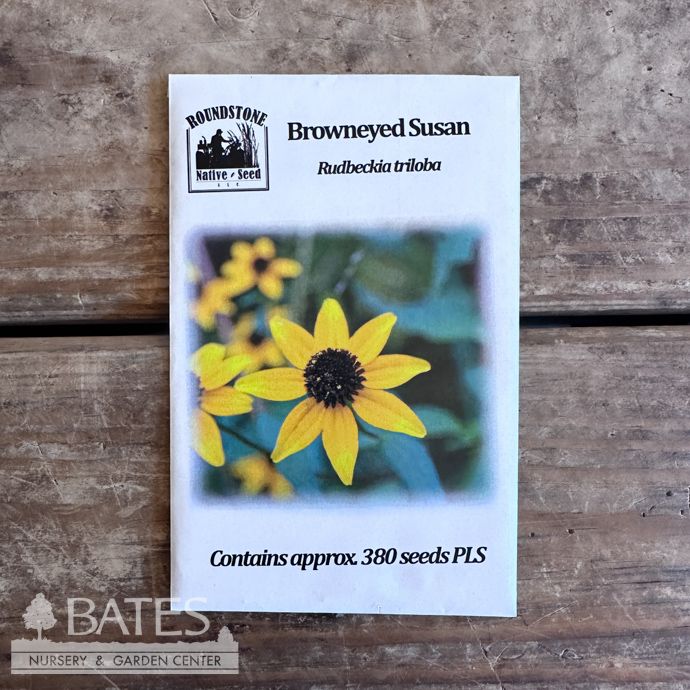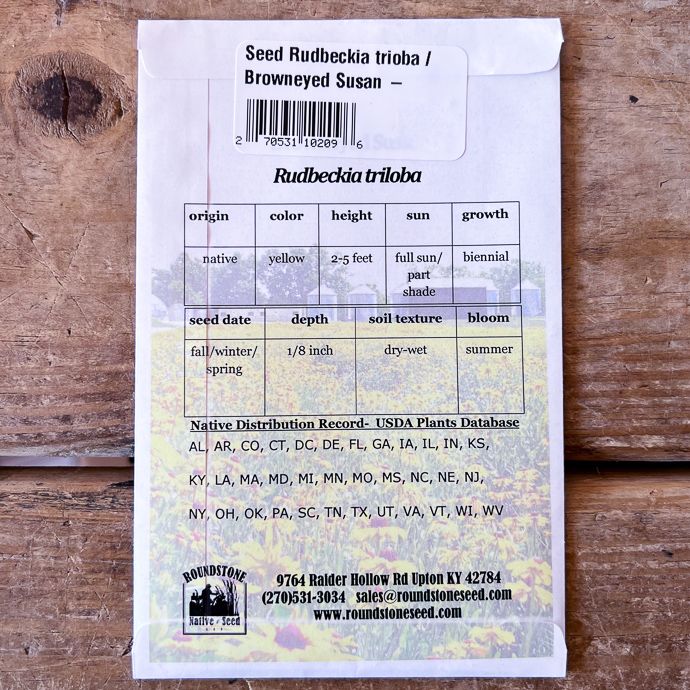Seed Rudbeckia triloba/ Browneyed Susan - Roundstone Native (TN)
Seed Rudbeckia triloba/ Browneyed Susan - Roundstone Native (TN)
SCIENTIFIC NAME: Rudbeckia triloba
COMMON NAME: Brown-Eyed Susan
GARDEN SIZE: 2–3 feet tall x 1–1.5 feet wide
GROWTH RATE: Fast (biennial or short-lived perennial that self-seeds freely)
USDA ZONE: 4 to 8
EXPOSURE: Full Sun, Part Shade
WATER & SOIL: Tolerates a wide range of soil conditions and prefers average to dry moisture. Requires regular watering after planting, but is drought tolerant once established.
HABIT (FORM): Densely branched, clump-forming herbaceous perennial or biennial
FOLIAGE: Deciduous; rough-textured, thin green leaves, some with 3 lobes; lower leaves ovate to ovate-cordate
FLOWERS: Small daisy-like yellow rays with brown-purple center disks; profuse bloom from July to October
PLANT ORIGIN: Central and Eastern United States, including Tennessee.
WILDLIFE SUPPORT: Excellent nectar source for butterflies, bees, and other pollinators. Provides seasonal cover for small wildlife and may support seed-eating birds. Host plant for local butterflies and moths.
FERTILIZING: Give a root stimulant or 4-3-3 fertilizer during initial planting, then feed lightly in late winter or early spring with compost or an organic fertilizer.
PRUNING: Cut back to just above soil level in early spring to encourage dense regrowth. Leaving stems, leaves, and spent blooms over the winter benefits native pollinators and wildlife.
TOXICITY FLAGS: None reported
USES: Border plant, container, cut flower, mass planting, cottage gardens, rain gardens, patio containers


